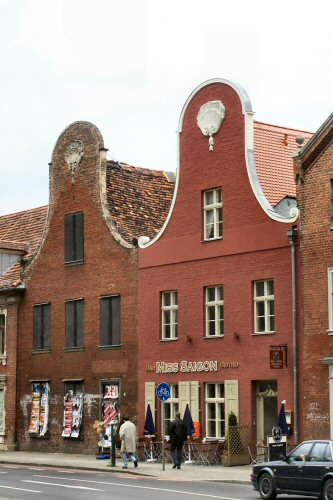
|
Potsdam is a Berlin suburb with a
population of about a quarter million. In the 1700's many of the
Potsdam inhabitants were Dutch, and these shops used to be their homes,
in the Hollandische Viertel.
|
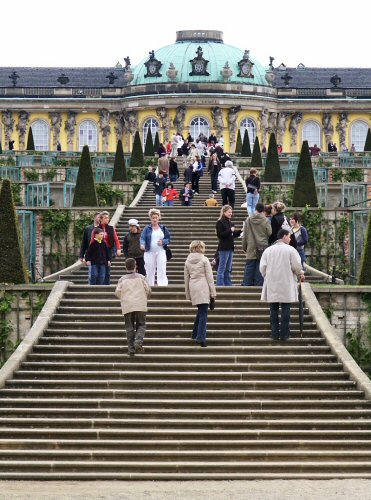
|
Potsdam is best know for the Schoss
Sansouci and its associated park. Here are the steps leading up
to the San Souci palace itself.
Sans Souci (without worries) was built by Frederick the Great around
1745, using among others, the craftsmen who lived in the Dutch Quarter.
|
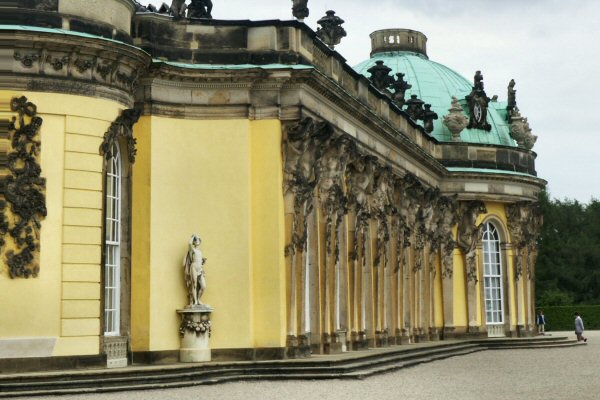
|
A closer view of the Schloss
Sanssouci. This was NOT the site of the post-WW2 conference that
was held in Potsdam, That was a smaller, newer palace, Schloss
Cecilienhof, across town.
|
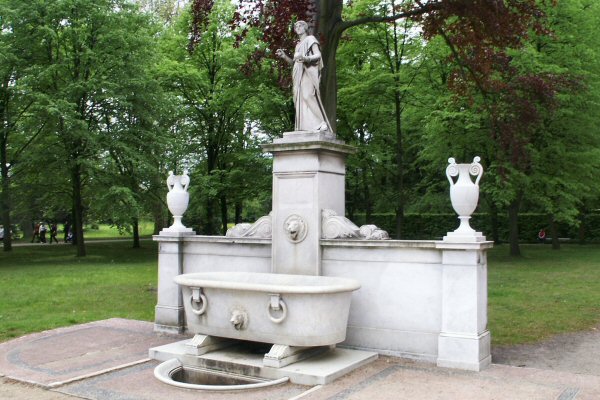
|
Shortly after the palace was done, the
Schlosspark Sanssouci was started. Work on the 700 acre landscape
park continued for 150 years. Lots of statues, fountains, a
Chinese Tea House and Roman Baths grace the grounds.
|
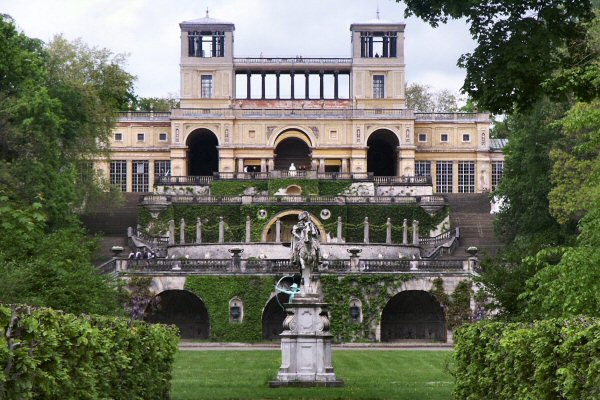
|
The Orangerie, dating to ~ 1860, was built
as a hostel for the king's guests.
|
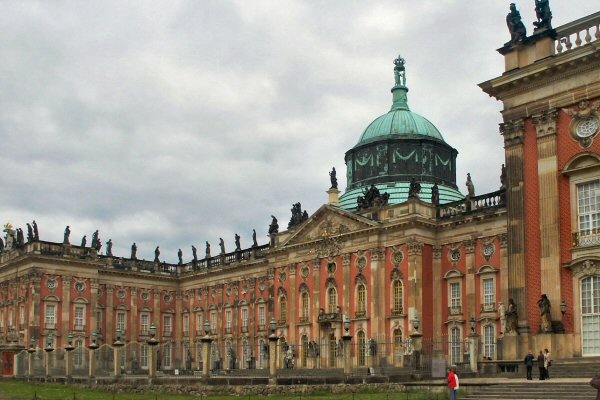
|
The Neues Palais was built as a cozy home
by Frederick the Great. It was last occupied by Kaiser Wilhelm,
until WWI went wrong. It is only two stories, with about 200
rooms, of which 80 are bed rooms. Some of the formal rooms are
entirely lined with marble.
|
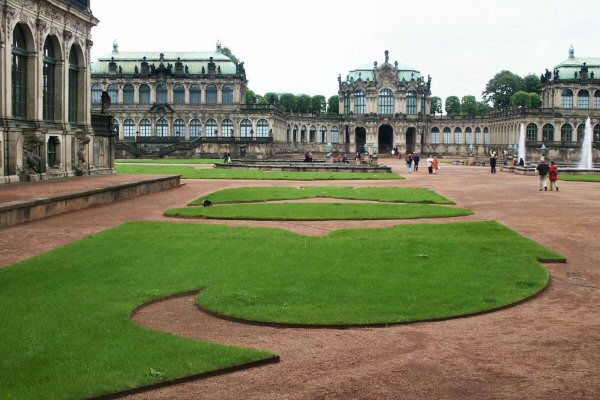
|
Jumping to Dresden, we see the interior
courtyard of the Zwinger, built in the 1860's for Augustus the
Strong. This is described as high German baroque. There are
a lot of Italian influences around, too.
|
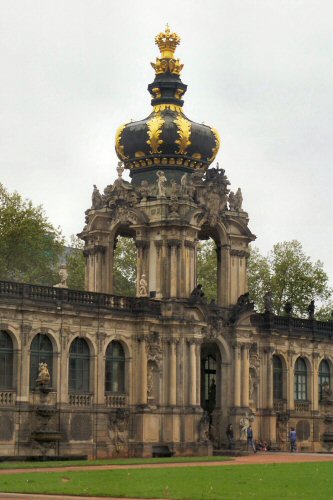
|
The Zwinger has three main gates, and this
one, the Kronentor (Crown gate) is about as baroque as they come.
|
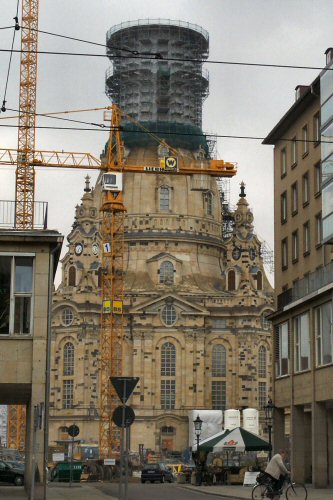
|
We all know that the bombing of Dresden was
devastating. Everywhere you look reconstruction continues.
This is the Frauenkirche, with its 77 foot diameter dome still under
reconstruction. Construction on the original started in 1726, and
the dome was completed in 1738. Destroyed in WW2, it was mostly a
pile of rubble until the $150M project was started in 1993.
|
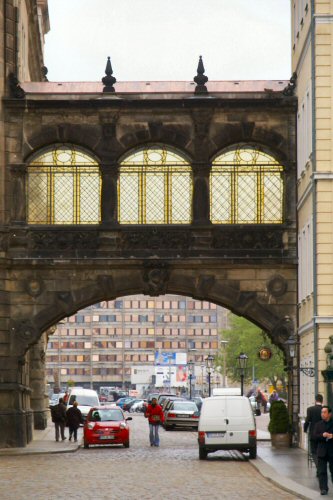
|
Of course, Dresden was under Russian
domination throughout the Cold War. Both here and in East Berlin,
you see lots of dull "modern" buildings with copper or bronze coated
windows. This passageway, part of the Renaissance palace,
contrasts with the Communist era office building behind.
|
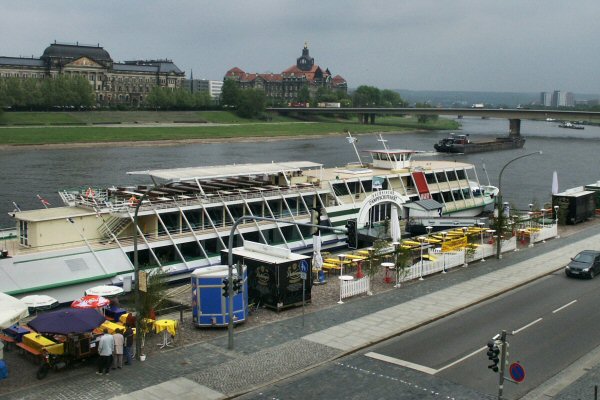
|
The Elbe River divides New Dresden from Old
Dresden. (New still means pretty old) In the summer of
2002, the Elbe rose about 20 feet above the level we see here.
|
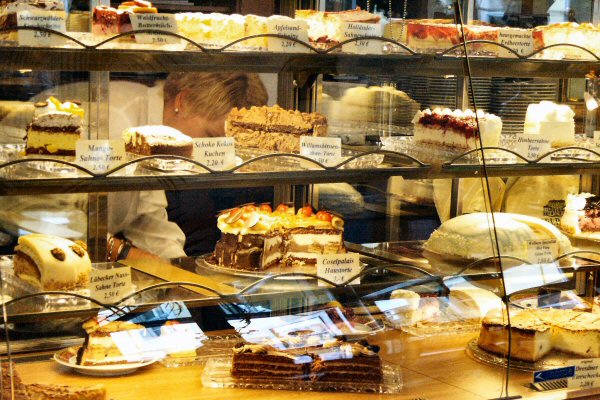
|
Finally, the pastries. Ah, the
pastries! This is the display case in the Cosel Palais, a
restaurant and tea shop. It was really hard to choose just one.
|
 |
This is the end.
|